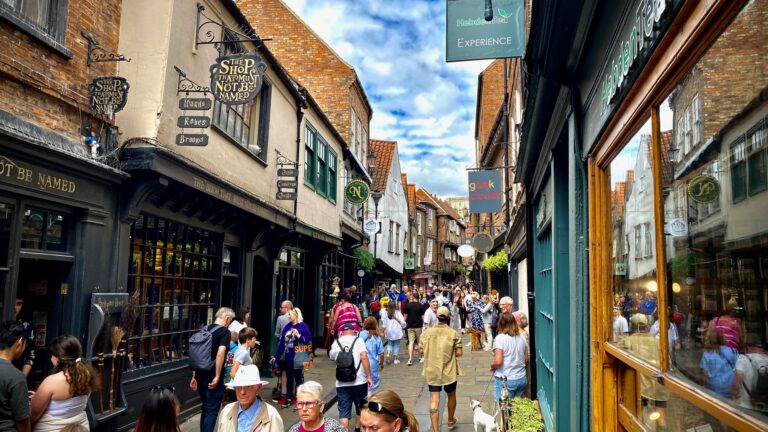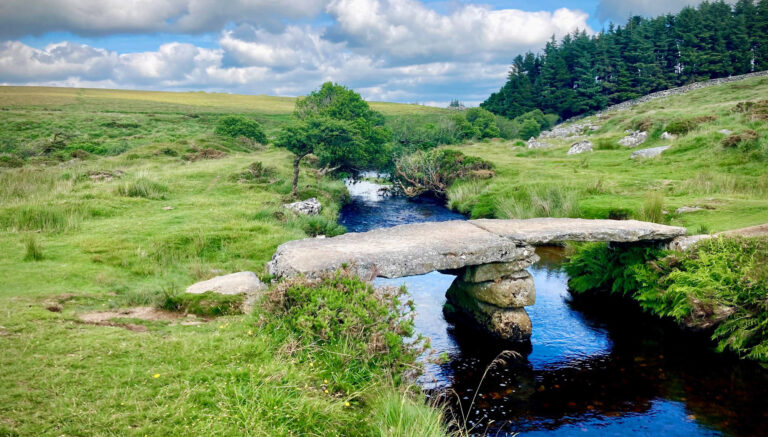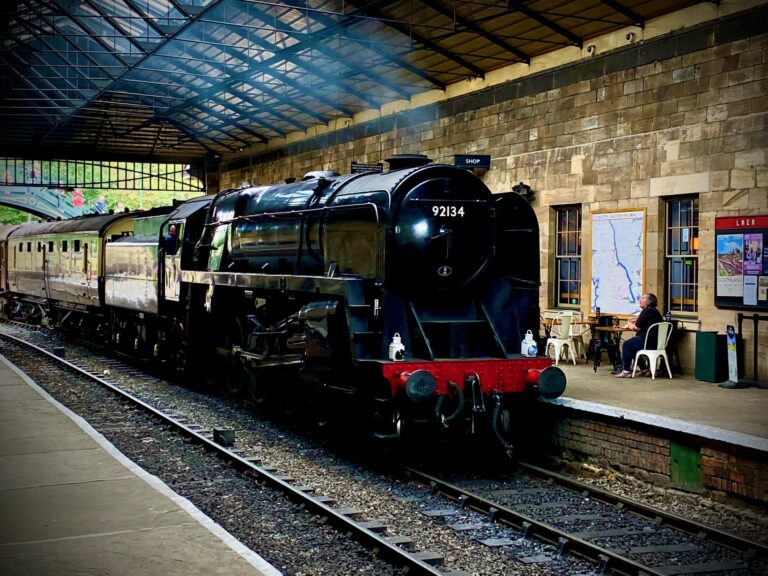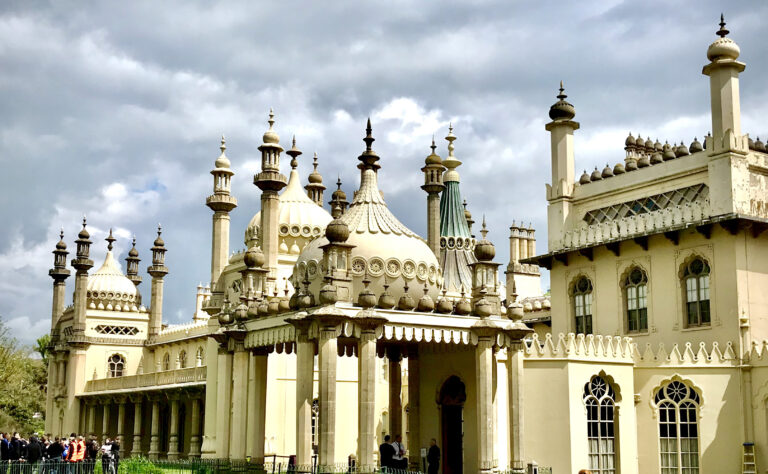Things to Do in the Yorkshire Dales: An Exploration Guide
The Yorkshire Dales: A Blend of Nature, History, and Unique Experiences
The Yorkshire Dales stands as a testament to the UK’s lush landscapes, rich history, and vibrant local culture. From the historic charms of Skipton to the natural wonder of Malham Cove, this region has something for everyone. Here’s a guide on ‘Things to do in YorkshireDales’.
Where are the Yorkshire Dales?
The Yorkshire Dales are an upland area of the Pennines. The Western Dales run down from some of the highest of the Pennines moorland shoulders. There is an infinite loneliness beneath the brows as the dale heads. Passing down the Dales isolated farms give way to hamlets, then to villages on the valley floors. Finally to busy little towns which have developed beside the roads and railways cutting through England’s mountain backbone.
Nearly 2 million years ago, the rocks forming the Pennines cracked and the land slipped between the so-called ‘Craven Faults’. This formed the “Aire Gap” through the Pennines. There has been quarrying along the lines of the Craven Faults – especially in Ribblesdale but remoteness is still the predominant quality here. This is a great attraction for walkers striding the moors from one dale head to another. Additionally for potholders scrambling in th dank world beneath the moors. The Yorkshire Dales National Park was created in 1954.
Unmissable Spots in the Yorkshire Dales
Skipton Gateway to the Yorkshire Dales

Roads converge from every direction on this busy market town at the eastern approach to the Aire Gap. Known as the ‘Gateway to the Dales’, Skipton boasts a majestic castle, thriving markets, and serene canal paths.
Discovering Skipton: The Gateway to the Yorkshire Dales
Nestled within the serene landscapes of North Yorkshire lies Skipton. With its rich history, Skipton offers a blend of cultural heritage and natural beauty. This makes it a must-visit for anyone exploring the region.
A Dive into Skipton’s Rich History

Founded over a millennium ago, Skipton’s roots trace back to the Norman conquest. Dominating the town’s skyline is Skipton Castle, a remarkably preserved medieval fortress that has stood witness to centuries of history. The castle’s storied walls, having withstood the turmoil of the English Civil War, today serve as a testament to Skipton’s resilient spirit.
In front of the Castle, the 14th Century Holy Trinity Church stands proud. Its huge clock face dominates, at the top of the busy High Street.
The main Leeds-Liverpool runs through the town. The longest canal in Northern England it is now used extensively by pleasure traffic. You can find out more about Skipton and things to do in the town (including a hilarious augmented reality tour of the town) here
The Market Town Legacy
At the heart of Skipton is its vibrant market, a tradition spanning over 800 years. Held on the cobbled High Street, four days a week, the market remains a bustling hub for both locals and tourists. It offers the shopper everything from fresh produce to artisanal crafts. If you want more shopping you’ll find it by wandering off the main high street into the side streets.
Why Consider Visiting Skipton?
Skipton has earned accolades for its quality of life, often being cited as one of the best places to live in the UK. For those seeking ‘Things to do in Yorkshire Dales’, Skipton offers a unique blend:
- Historical Exploration: Beyond the castle, the town’s numerous heritage buildings and museums provide a deep dive into its storied past.
- Natural Beauty: Skipton serves as an ideal starting point for treks into the Yorkshire Dales. Offering verdant landscapes and scenic beauty.
- Local Experience: From its traditional pubs to the renowned market, Skipton offers an authentic Yorkshire experience.
Conclusion
Skipton, with its harmonious blend of past and present, stands as a beacon for history enthusiasts and nature lovers alike. As a cornerstone in the Yorkshire Dales narrative, it promises a visit rich in exploration, discovery, and genuine Yorkshire charm.
Bolton Abbey: A Historical Beacon in the Yorkshire Dales
Exploring Bolton Abbey in the Heart of the Yorkshire Dales
Approaching the village of Bolton Abbey the visitor is aware of coming to a place of great charm. Situated within the Yorkshire Dales’ captivating landscapes, Bolton Abbey stands as a testament to the region’s rich historical and cultural tapestry. With its storied past and scenic surroundings, this site offers a unique blend for visitors keen on ‘Things to do in Yorkshire Dales’.
Delving into Bolton Abbey’s History
Bolton Abbey, encompasses 12,000 acres of moors, woodlands, and farmlands. At its heart lies the Priory Church and the ruins of an Augustinian priory, established in the 12th century. Over time, this ecclesiastical site witnessed the ebb and flow of history. From flourishing medieval times to the challenges posed by the Dissolution of the Monasteries in the 16th century.
The Estate’s Notable Fact
While Bolton Abbey’s ruins are a poignant reminder of historical upheavals, the estate itself remains in the ownership of the Dukes of Devonshire. The current, 12th Duke and his family continue to oversee the estate, ensuring its conservation for future generations.
Why Bolton Abbey is a Must-Visit in Yorkshire Dales
- Historical Significance. The ruins and the Priory Church offer a glimpse into a time gone by, allowing visitors to step back into medieval England.
- Natural Splendor. The estate presents an array of natural beauties. From the River Wharfe, which meanders through the grounds, to the iconic Stepping Stones and the Strid, a narrow, dramatic section of the river.
- Family-Friendly. With ample open spaces, woodland trails, and engaging events. Bolton Abbey is an ideal destination for families seeking outdoor adventures.
Conclusion
As a cornerstone of the Yorkshire Dales, Bolton Abbey seamlessly melds history and nature. Whether you’re a history aficionado, a nature lover, or someone seeking a peaceful retreat, Bolton Abbey promises an experience that resonates. All this ensures its a top choice among ‘Things to do in Yorkshire Dales’. You can find more details about visiting Bolton Abbey here
Burnsall and Leyburn: Two Gems in the Yorkshire Dales
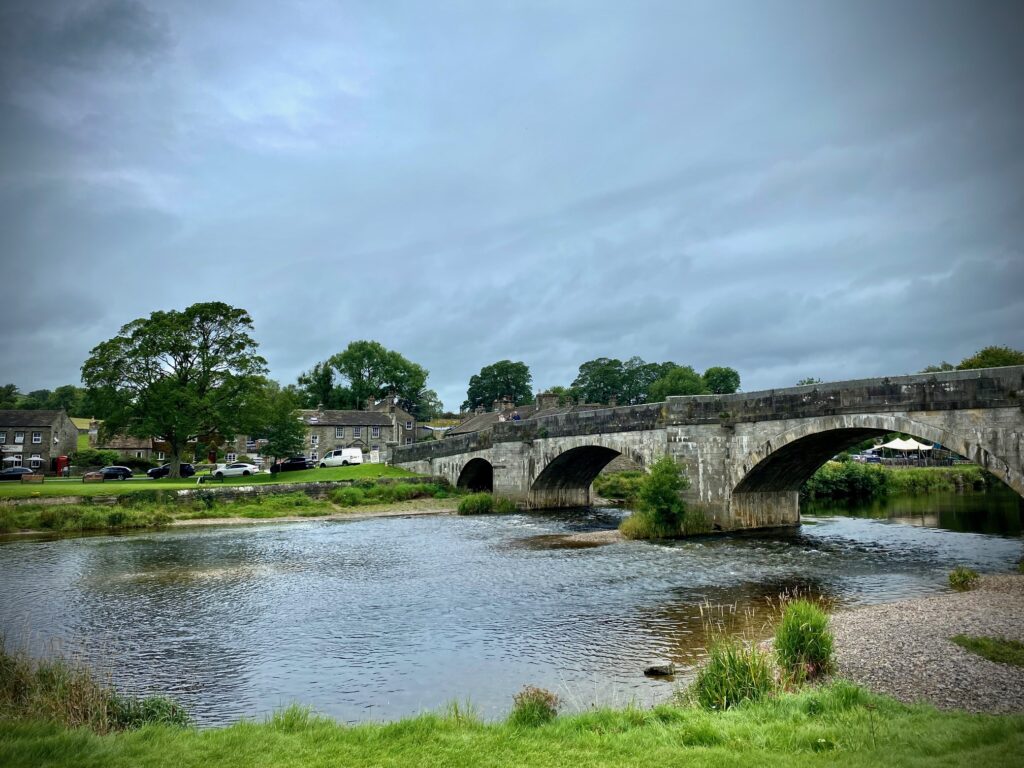
While Burnsall graces visitors with its picturesque riverside setting, Leyburn promises panoramic views of Wensleydale.
Exploring Burnsall and Leyburn: Historical Highlights of Yorkshire Dales
The Yorkshire Dales is replete with picturesque villages and towns, and among its standout locales are Burnsall and Leyburn. Both places encapsulate the essence of the Dales, offering visitors a fusion of history, scenic beauty, and local charm.
Burnsall: A Riverside Retreat
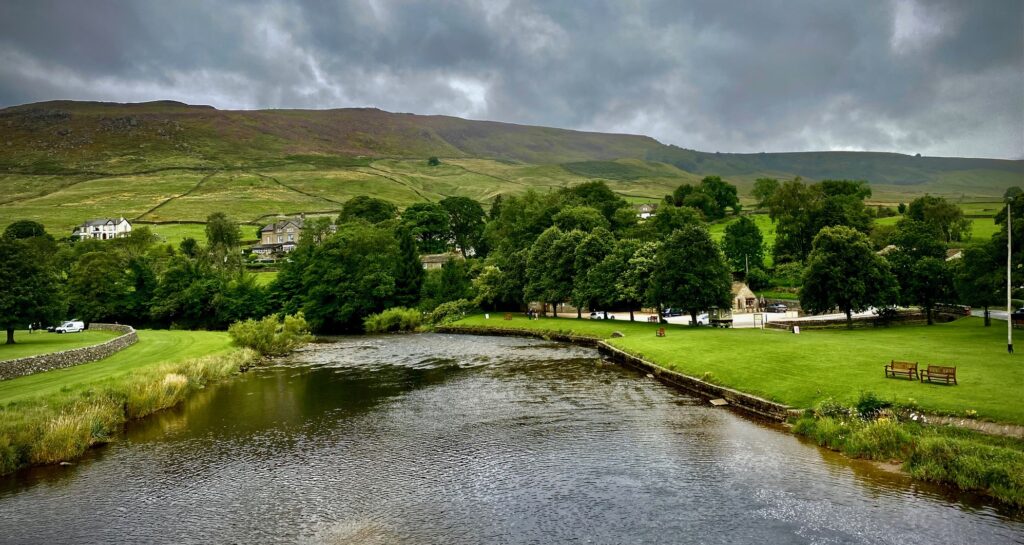
Nestled along the River Wharfe, Burnsall stands out for its idyllic setting and historical resonance. Its history traces back centuries, with the ancient village church, St Wilfrid’s, bearing witness to its deep-rooted past. Renowned for its iconic five-arched bridge that spans the river, Burnsall is also a gateway for trekkers. Numerous routes from here lead to dramatic spots, like Troller’s Gill.
Burnsall’s charm includes opportunities for riverside picnics, and the opportunity to explore the Dales Way.
Leyburn: A Market Town with a Panoramic View
Perched overlooking Wensleydale, Leyburn is a bustling market town that exudes an old-world charm. Its market square has been a hub of activity for centuries, echoing the rhythms of Yorkshire life.
Reasons to Visit Leyburn. Leyburn boasts attractions such as The Little Chocolate Shop, The Old School House Arts Centre. Apart from its weekly market, it’s a perfect base for venturing further into the Dales. Leyburn’s Shawl Is a prominent limestone ridge, with stunning views. Legend has it that Mary, Queen of Scots, dropped her shawl here during an escape from nearby Bolton Castle.
Conclusion
Burnsall and Leyburn, each with its distinct character, offer visitors a taste of the Yorkshire Dales’ multifaceted beauty. A visit to these two locales promises a blend of history, nature, and local experiences that capture the heart of Yorkshire.
Aysgarth Edwardian Rock Garden in the Yorkshire Dales
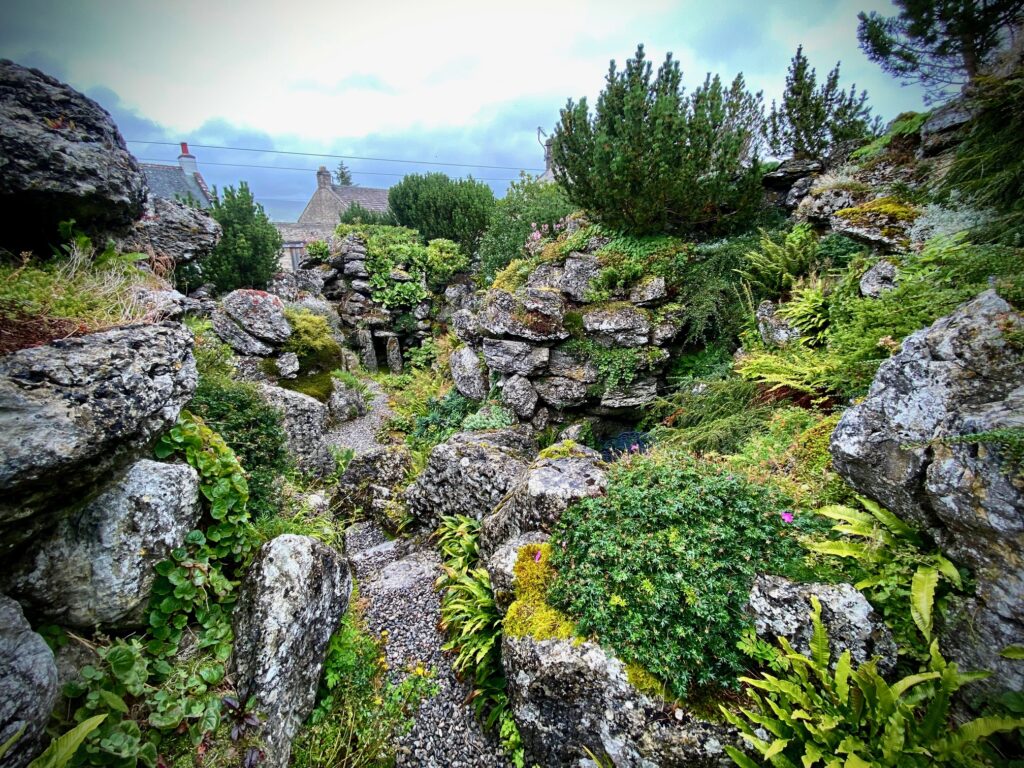
This hidden gem offers tranquility amidst meticulously designed landscapes.
Aysgarth Edwardian Rock Garden: A Historical Oasis in Yorkshire Dales
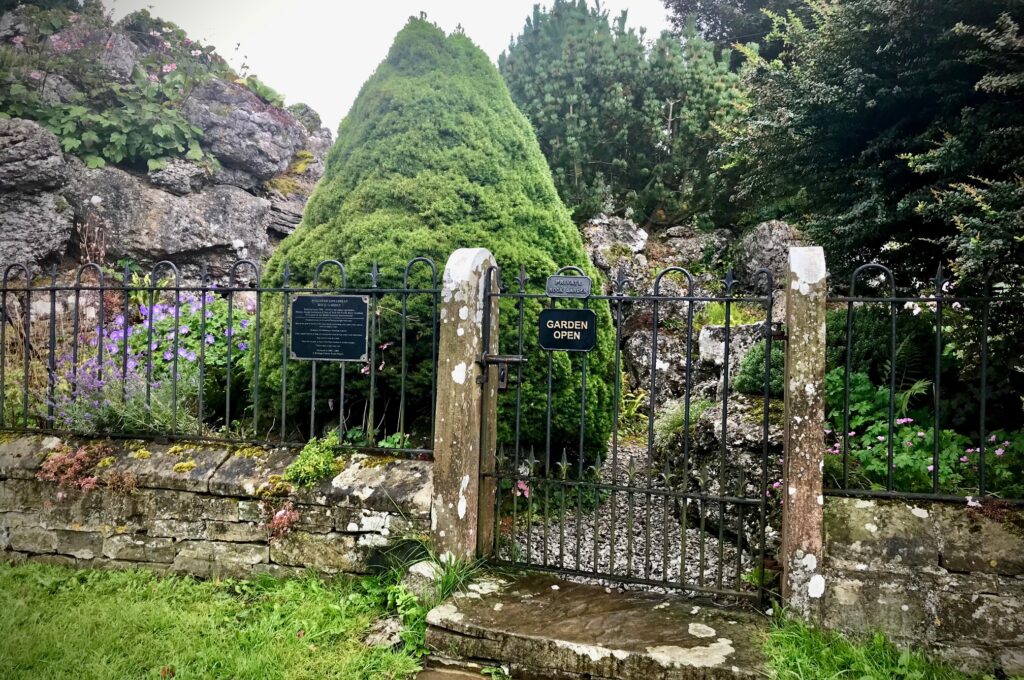
Amidst the rolling hills and picturesque landscapes of the Yorkshire Dales lies an unexpected treasure: the Aysgarth Edwardian Rock Garden. This verdant spot, with its meticulously designed landscapes and historical backdrop, offers visitors a peaceful retreat from the modern world.
A Glimpse into the Garden’s History
The Aysgarth Edwardian Rock Garden harks back to the early 20th century, reflecting the Edwardian era’s garden aesthetics. Designed with great attention to detail. It captures a period when rock gardening was in vogue in the UK. Blending artistry and nature. It has a thoughtful layout, weaving plants and rocks together in a harmonious dance.
Over the years, despite challenges, the garden has been lovingly restored and maintained, ensuring its beauty remains intact for generations.
Conclusion
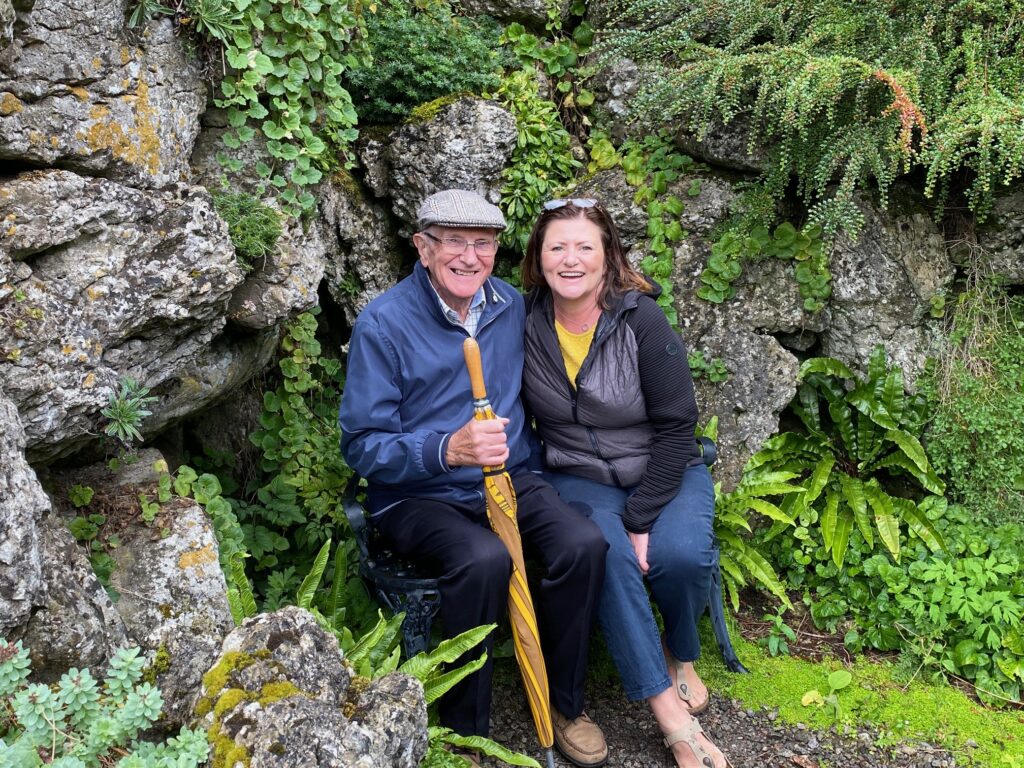
For those searching for ‘Things to do in Yorkshire Dales’, the Aysgarth Edwardian Rock Garden stands as a testament to the region’s diverse offerings. It is not a huge garden but free to visit. You have to drive slowly through the village to make sure you don’t miss it. So whether you’re a history buff, a gardening enthusiast, or simply a lover of nature, this garden promises a visit that is both educational and soul-soothing.
Hawes and Wensleydale Creamery: A Delightful Pairing in the Yorkshire Dales
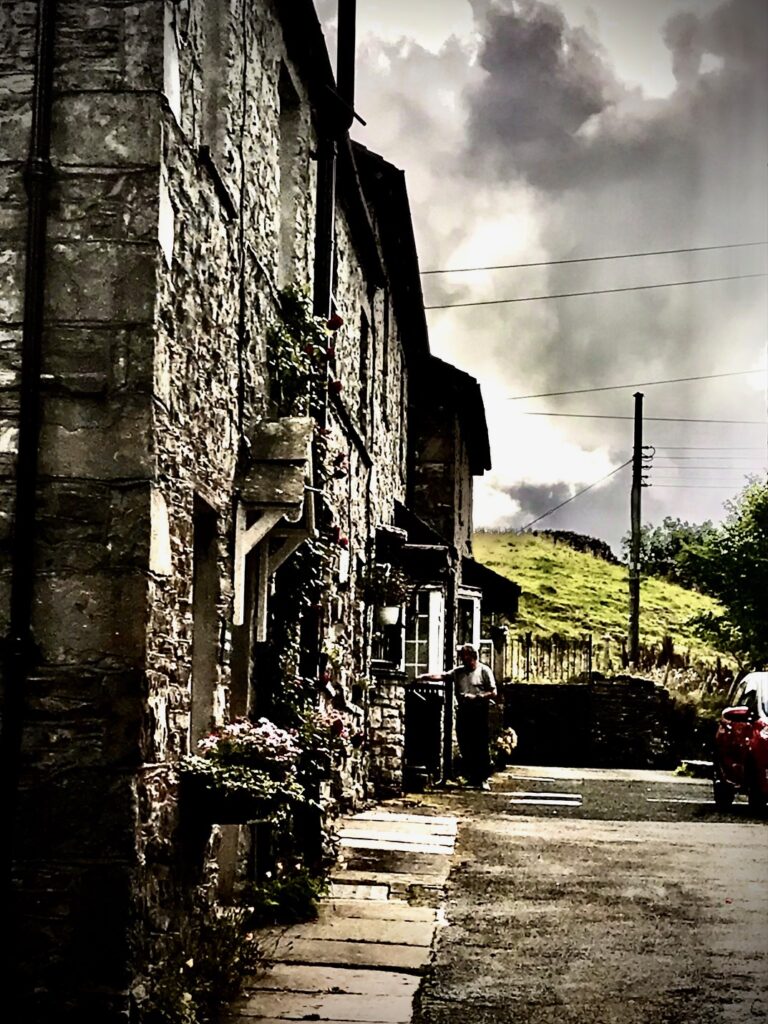
Not only is Hawes a delightful market town, but it’s also home to the Wensleydale Creamery, famous for its cheeses.
Journeying through Hawes and Discovering Wensleydale Creamery
Set against the backdrop of the stunning Yorkshire Dales, Hawes is more than just a charming market town. It’s the proud home of the Wensleydale Creamery. A destination that has put this locale on the map for cheese lovers worldwide.
The Essence of Hawes
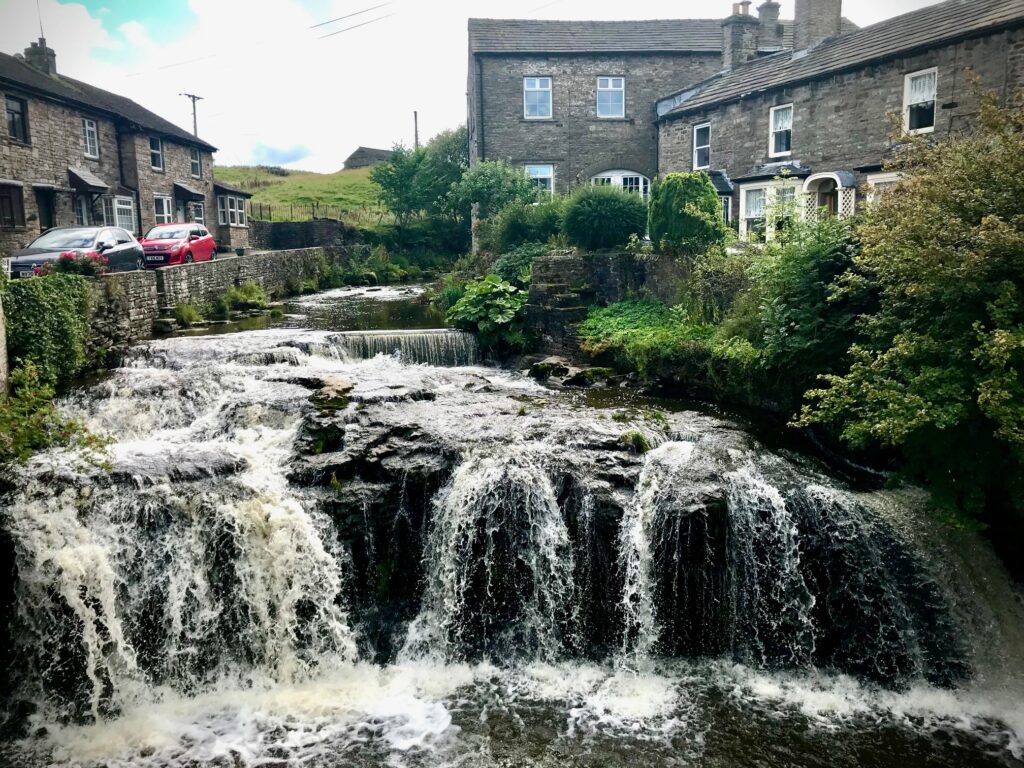
Perched high in Wensleydale, Hawes stands as one of England’s highest market towns. With its cobbled streets, traditional shops, and surrounding scenic beauty, it encapsulates the quintessential Yorkshire spirit.
A Historical Overview of Wensleydale Creamery
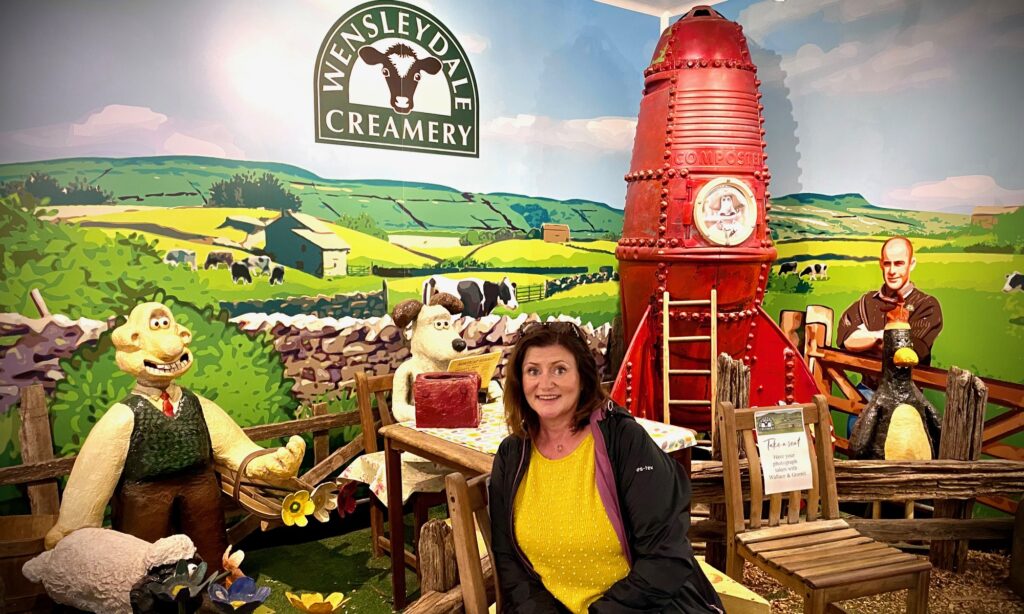
Tracing its origins back to the 12th century, the Wensleydale Creamery has a legacy intertwined with French Cistercian monks who settled in the region. These monks, with their unique cheesemaking techniques, laid the foundation for what would become the iconic Wensleydale cheese.

It’s not just history that makes the Creamery stand out. In recent years, it gained pop-culture prominence through the animated characters Wallace and Gromit, who expressed a pronounced love for Wensleydale cheese.
What Makes a Visit Indispensable?
- Cheese Galore. At Wensleydale Creamery, visitors can not only savour the legendary cheese but also witness its production (during week days). From the initial curdling of milk to the final product. There is also a demonstration, which is free so make that your first stop. The restaurant in the Creamery is also worth a visit, as is the delightful shop.
- Hawes’ Richness. Beyond cheese, Hawes offers the Dales Countryside Museum. Vibrant weekly markets, and an array of traditional shops that celebrate local craftsmanship.
- Natural Canvas. The surrounding landscapes, marked by verdant valleys and cascading waterfalls, make Hawes an ideal base for exploring the Yorkshire Dales.
The Artistic Side: Yarn Bombing in the Yorkshire Dales

The Dales isn’t just about nature. The art of ‘Yarn Bombing’, or guerrilla knitting, has become a unique attraction. Colourful knitted creations adorning public spaces, blending tradition with creativity. Hawes obviously has an amazing group of knitters. Their activity in ‘Yarn Bombing’ the village is an absolute joy to see. Undertaken to raise money for the Yorkshire Air Ambulance their work, often massive, is a huge draw in the location.
Accommodation: Staying in Hawes
When in Hawes, numerous bed and breakfasts and guesthouses offer cosy accommodations, allowing visitors to immerse themselves in local life.
Conclusion
Hawes and Wensleydale Creamery present a delightful combination of gastronomic pleasure and cultural immersion. Offering a taste of Yorkshire’s culinary heritage alongside the timeless beauty of the Dales. This pairing guarantees a memorable experience and great photographs.
Natural Wonders:
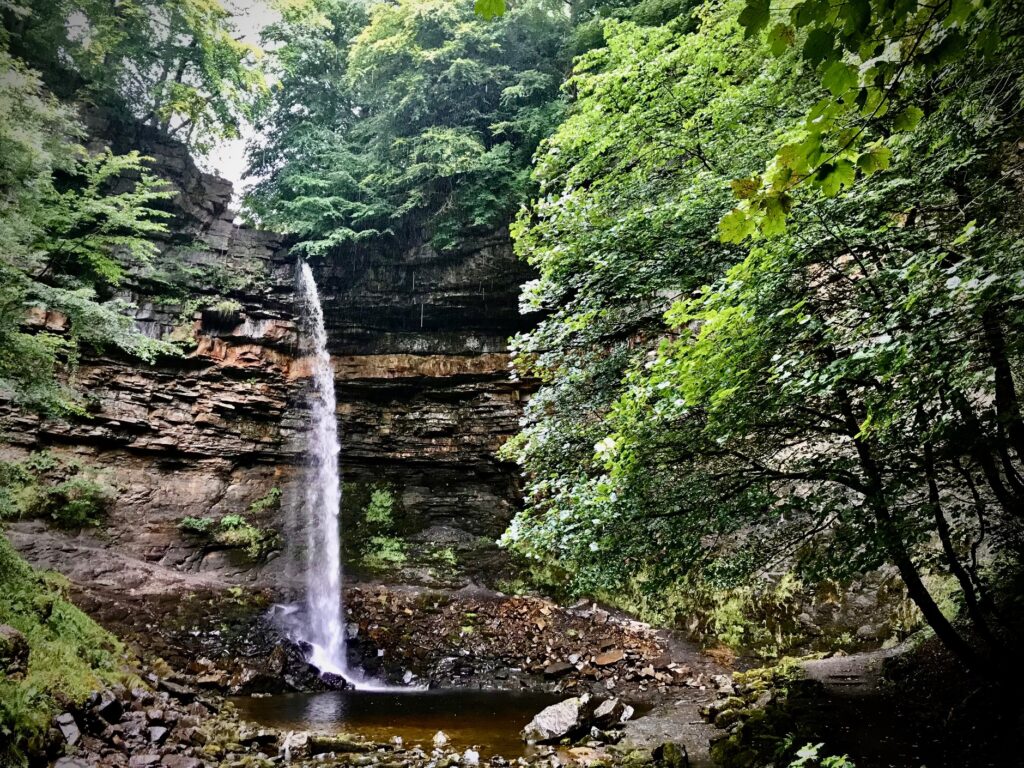
While Hardraw Force is England’s highest single-drop waterfall, The Buttertub Pass and Malham Cove promise breathtaking scenic views.
Hardraw Force in the Yorkshire Dales
Hardraw Force: A Majestic Waterfall in the Yorkshire Dales
Unravelling the Beauty of Hardraw Force
In the heart of the Yorkshire Dales, surrounded by lush greenery and time-worn rocks. Hardraw Force emerges as one of the most awe-inspiring sights. This majestic waterfall is natural wonder is not just a testament to nature’s artistry but also carries a fascinating history. Thus making it a ‘must-visit’ when exploring the area.
An Overview of Hardraw Force
Hardraw Force, proudly holding the title of England’s highest single-drop waterfall, plunges dramatically over a limestone cliff. A descent of 100 feet. The force is nestled behind the historic Green Dragon Inn, making its accessibility both unique and somewhat secretive.
Delving into the History
The vicinity of Hardraw Force has seen human activity for centuries. It gained prominence in literature and art during the 19th century, with the likes of the famous Romantic poet William Wordsworth and the artist J.M.W. Turner both captivated by its beauty. Kevin Costner enjoyed its charm too during the filming of the infamous shower scene in ‘Robin Hood; Prince of Thieves.
One of the waterfall’s most enchanting features is its natural amphitheater setting. This has made it a chosen location for the annual Hardraw Scaur Brass Band Festival, a delightful event that harmonizes the sounds of music with the roar of cascading waters.
The Buttertub Pass
Continuing to head out of Hawes from Hardraw Force the road leads you to the Buttertub Pass. Carving its own distinct mark on the landscape. Part of the historic route along the B6270, with tales as ancient as the rocks it winds around. The Pass offers travellers an exhilarating blend of scenic views and rich heritage.
The Essence of the Buttertub Pass
Linking the towns of Hawes and Muker, the Buttertub Pass, is also known as the Cliff Gate Road. It meanders through a series of dramatic twists and turns. The name ‘Buttertub’ is derived from the limestone potholes dotted along the route. Resembling the tubs butter was once stored in.
While the origins of the road are not fully documented, local lore whispers tales of farmers using these ‘buttertubs’ to store and cool their butter during their journey to the market in Hawes. Over time, the road became a lifeline, connecting communities and facilitating commerce.
The Buttertub Pass is not just about driving; it’s an experience. The panoramic views, especially from the summit, showcase the Yorkshire Dales’ grandeur. It’s no wonder that this route was chosen for the 2014 Tour de France. Bringing global attention to its rugged beauty.
Reasons to Embark on This Journey
- Breathtaking Scenery: Every twist and turn of the Pass offers vistas that are postcard-perfect.
- Historic Intrigue: The Buttertubs serve as a reminder of a bygone era, adding a touch of mystery to the drive.
- Adrenaline Rush: For those seeking a thrill, the road with its sharp bends and steep inclines promises an exhilarating drive.
Ribblehead Viaduct : Engineering Mastery in the Yorkshire Dales
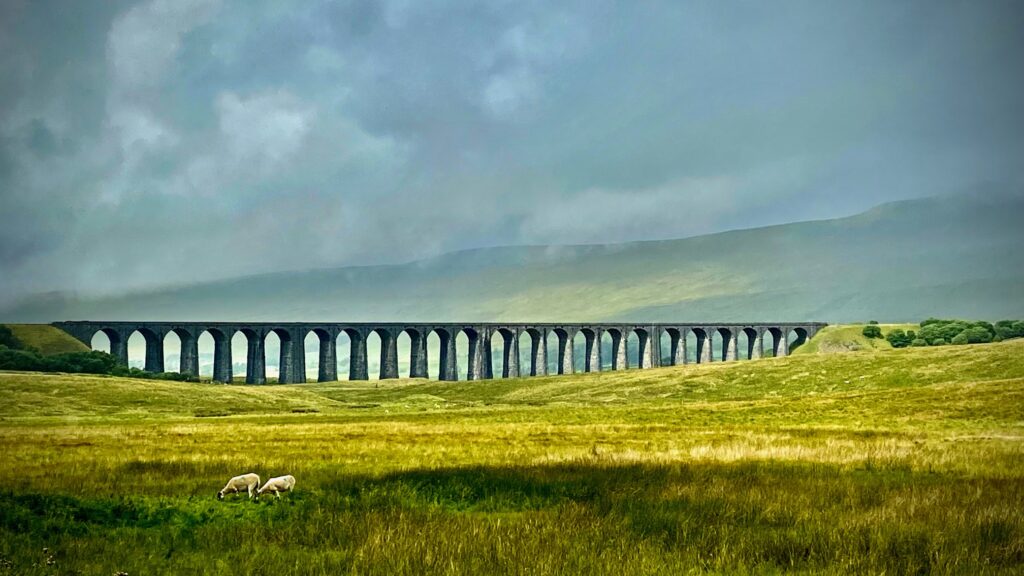
Marvel at the architectural splendour of the Ribblehead Viaduct, and later, explore the quaint charm of Settle.
Ribblehead Viaduct: A Majestic Sight in the Yorkshire Landscape
The Ribblehead Viaduct stands as a sentinel in the Yorkshire Dales, an emblem of Victorian engineering prowess set against the backdrop of Britain’s breathtaking countryside. This iconic landmark beckons with its blend of history, architectural elegance, and scenic beauty.
A Dive into the Past: The Viaduct’s History
Built between 1870 and 1874, the Ribblehead Viaduct was conceived as a critical section of the Settle-Carlisle Railway. Its 24 arches, spanning a distance of over 400 meters, were erected amidst the challenging and often harsh conditions of Batty Moss valley.
The construction of the Ribblehead Viaduct is a tale of human endeavour. Thousands of navvies, along with their families, set up temporary villages around the construction site, facing both the elements and the inherent dangers of such a colossal project. Tragically, the endeavour claimed many lives, with local graveyards bearing witness to the sacrifices made for the viaduct’s creation.
Not Just a Bridge: The Viaduct’s Stature and Setting
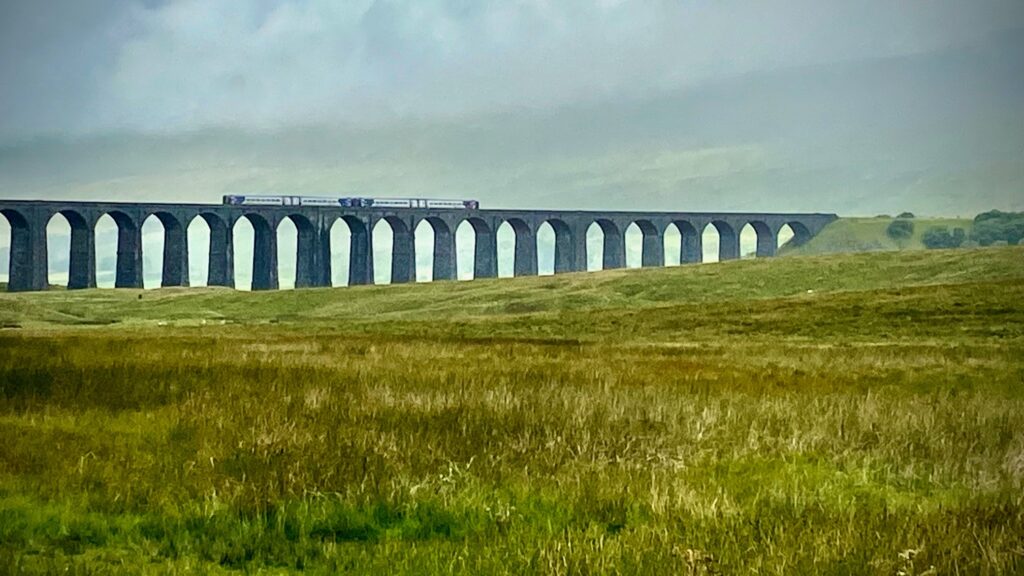
Set against the expansive vistas of the Yorkshire Dales, the Ribblehead Viaduct isn’t merely an infrastructural marvel. It’s an artwork harmoniously integrated with its environment. Limestone pillars rise from the ground, complementing the surrounding rugged terrain. Offering viewers a striking contrast between man-made achievement and natural beauty.
Why Visit Ribblehead Viaduct?
- Scenic Splendor. The viaduct, in its grandeur, provides a panoramic view of the Yorkshire Dales, making it a dream spot for photographers and nature enthusiasts alike.
- Architectural Appreciation. Understanding the challenges faced during its construction will heighten one’s respect for this Victorian marvel.
- Walking Trails. The area around the viaduct offers various walking trails, allowing visitors to soak in the beauty of the Dales.
Concluding Thoughts
The Ribblehead Viaduct is more than just a bridge; it’s an Instagram worthy symbol of human ambition, perseverance, and artistry. As one charts ‘Things to do in Yorkshire Dales’, a stop at this iconic viaduct ensures a union of history, engineering, and the unmatched allure of the Yorkshire countryside.
Settle in the Yorkshire Dales
A Quintessential Yorkshire Dales Town.
Nestled at the gateway to the Dales, Settle is a quaint market town with cobbled streets and a vibrant history. Its close proximity to the Ribblehead Viaduct and other natural wonders makes it a strategic base for visitors.
The Historical Canvas of Settle
Settle’s history is a rich tapestry that spans several centuries. With evidence of settlements dating back to the Iron Age, the town has seen Viking invasions, Roman conquests, and the rise and fall of local industries. The Settle Market, established in the 13th century, still thrives today, offering a taste of local produce and crafts.
Notable Attractions and Reasons to Visit
Natural Beauty. Beyond its historical landmarks, the region offers hiking trails, caves, and breathtaking views of the Yorkshire Dales.
Architectural Marvels. From the Ribblehead Viaduct’s grandeur to Settle‘s traditional limestone buildings. There’s plenty for architecture enthusiasts.
Local Experience. Settle’s market, cafes, and local events offer an authentic slice of Yorkshire life.
In Conclusion
When planning your trip to the Yorkshire Dales ensure that you find time to visit the Ribblehead Viaduct and Settle. Perhaps take a trip on the Settle to Carlisle Railway to really better understand the landscape of this amazing county.
Malham Cove

Malham Cove: Nature’s Majestic Sculpture in the Yorkshire Dales
Discovering the Timeless Beauty of Malham Cove
Nestled in the heart of the Yorkshire Dales, Malham Cove stands as a testament to nature’s power and time’s relentless march. With its grandiose limestone facade and a history that echoes from millennia past, it’s a must-visit landmark for those exploring ‘Things to do in Yorkshire Dales’.
The Magnificent Facade of Malham Cove
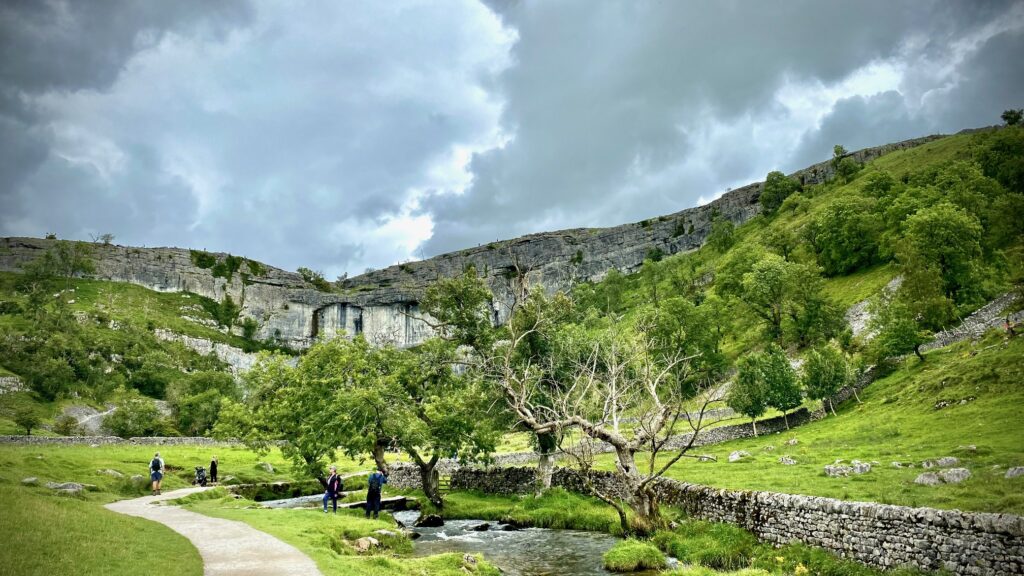
Emerging from the verdant landscape, Malham Cove‘s vast limestone cliff reaches a staggering height of roughly 80 meters. At its base, an intricate lattice of limestone pavement, often described as nature’s cobblestones, spreads out, creating a surreal mosaic that has intrigued geologists and visitors alike.
Malham Cove Through the Ages: A Rich History
Carved into its current form by the last Ice Age’s receding glaciers, Malham Cove has a lineage that’s over 12,000 years old. This ancient waterfall, born from melting glaciers, slowly eroded the limestone, creating the iconic curved face we see today. As the water’s force diminished over time, it began to carve the ground beneath, giving rise to the unique limestone pavement.
The Silver Screen Connection: A Cinematic Backdrop

The cove’s mysterious aura has not gone unnoticed by filmmakers. Its limestone pavement notably appeared in ‘Harry Potter and the Deathly Hallows – Part 1’, offering a magical backdrop that perfectly suited the world of wizards and enchantments. See if you can work out where our Wizarding Heroes pitched their tent.
Delving Deeper: The Surrounding Area
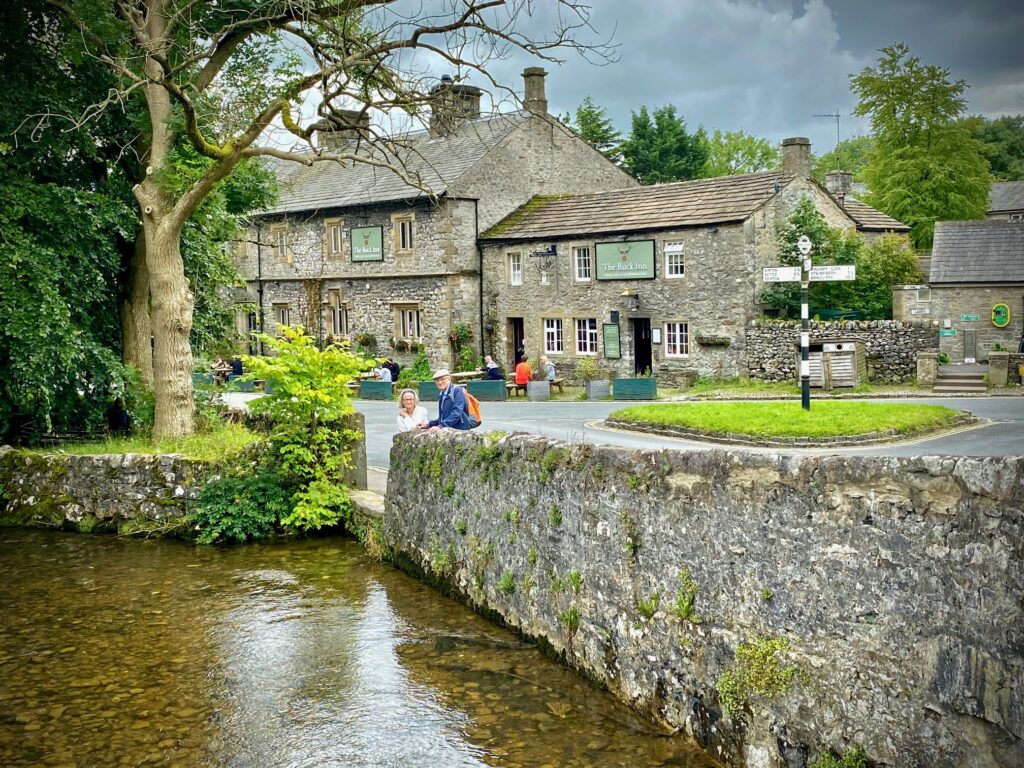
Adjacent to the Cove, visitors can explore Malham Tarn, a glacial lake with its own unique ecosystem. It’s a serene spot, perfect for birdwatchers and those looking to immerse themselves in nature’s calm. A half mile for path leads to the staggering cliffs of Gordale Scar, where waterfalls plunge down into a precipitous gorge. Nearby Janet’s Foss, another waterfall rushes over a thick apron of limestone deposit down to a pool.
When you are done, the village of Malham offers cozy pubs and inns, allowing visitors to refuel after a day of exploration.
Reasons to Explore Malham Cove
- Unmatched Views. The summit, accessible through a set of steps, provides breathtaking panoramas of the Yorkshire Dales, making it a favorite for hikers.
- Educational Opportunities. Guided tours often delve into the Cove’s geological significance, offering a blend of learning and leisure.
- Flora and Fauna. Beyond birds like the peregrine falcon, the area is home to unique plants that thrive in its limestone-rich soil.
Concluding Thoughts
Malham Cove, with its blend of natural wonder, historical depth, and cultural relevance, is more than just a tourist spot. It’s a chapter in the story of our planet and a symbol of the Yorkshire Dales’ rugged beauty. For those curating their ‘Things to do in Yorkshire Dales’, Malham Cove offers a tapestry of experiences that are both enlightening and enchanting.
Ilkley
A spa town rich in history, with opportunities for riverside walks and exploring the famed moors.
Unravelling the Charm of Ilkley
Ilkley, nestled at the gateway of the Yorkshire Dales, is a town that offers an intriguing blend of history and contemporary allure. For those mapping out their ‘Things to do in Yorkshire Dales’, Ilkley promises a delightful fusion of rich heritage, scenic landscapes, and modern-day attractions.
Tracing the Footprints: Ilkley’s Historical Canvas
The history of Ilkley dates back to the Roman era, evidenced by the ancient stone carvings and the remnants of the Roman fort, Olicana. As centuries rolled on, Ilkley evolved, seamlessly intertwining its historical roots with the vibrancy of the present.
Notable Historical Highlights
- The Ilkley Moor. Home to prehistoric rock carvings. This moorland offers a glimpse into the ancient rituals and beliefs of the region’s early settlers.
- Roman Fort Olicana: This fort (ruin) stands as a testament to Ilkley’s strategic importance during the Roman occupation.
Why Venture to Ilkley?
An Array of Attractions
- The Moors: Ilkley Moor, popularized by the folk song “On Ilkla Moor Baht ‘at”, is a haven for hikers and nature enthusiasts. Its vast expanse provides panoramic views and a serene escape.
- Ilkley Baths and Lido: A nod to its spa town heritage, the Lido offers a refreshing dip with views of the surrounding hills, making it a unique experience.
- Boutique Shopping:Modern Ilkley boasts a range of boutique shops, cafes, and restaurants, perfect for those seeking a leisurely day out.
Events and Festivals
The Ilkley Literature Festival is a noteworthy Autumnal event, attracting book lovers and authors alike. It’s a reflection of the town’s cultural prominence and its commitment to promoting literary arts.
In Conclusion
Ilkley, with its dual charm of ancient history and modern vibrancy, stands out as a must-visit in the Yorkshire Dales. Whether it’s the echoes of the past on the moors or the bustling town centre, Ilkley assures visitors of experiences that linger long after the journey ends. As you plan your ‘Things to do in Yorkshire Dales’, ensure that this picturesque town is on your list.
Scenic Detours: Grassington, Pateley Bridge, and the B6270
Are you considering a detour? Grassington offers cobbled squares and quaint shops, while Pateley Bridge boasts the oldest sweet shop in England. For those driving into Hawes, the B6270 road offers a scenic route, ensuring the journey is as captivating as the destination.
While the Yorkshire Dales boasts myriad attractions, the trio of Grassington, Pateley Bridge, and the B6270 offers travellers a unique exploration route. As one considers the ‘Things to do in Yorkshire Dales’, a visit to these places, coupled with a drive along the B6270, offers a tryst with history, natural beauty, and the region’s rich heritage.
Grassington: A Step Back in Time
Grassington, a quintessential market town, boasts cobbled streets and historic architecture. Its origins stretch back to the Iron Age, evident from the ancient field systems around the town. The Grassington Folk Museum is a repository of the town’s rich heritage, offering insights into its mining and agricultural past.
Why Visit Grassington?
The town’s lively square, bustling with cafes and shops, serves as a nucleus for festivals and events throughout the year, from the Dickensian Christmas to the Grassington Festival in summer.
Pateley Bridge: Where Heritage Meets Natural Splendor
Nestled by the River Nidd, Pateley Bridge is more than just a picturesque settlement. The town has a storied history, particularly in lead mining, which visitors can delve into at the Nidderdale Museum.
Reasons to Stop at Pateley Bridge
Beyond history, Pateley Bridge offers the allure of England’s oldest sweet shop and the surrounding Nidderdale Area of Outstanding Natural Beauty – a treat for both history buffs and nature enthusiasts.
The B6270: A Drive Through Nature’s Canvas
Linking various hamlets and towns, the B6270 is more than just a road; it’s a journey through the Yorkshire Dales’ scenic heart. Winding through valleys and offering panoramic vistas of the countryside, the drive encapsulates the region’s untouched beauty.
Apart from connecting key attractions, the B6270 is historic in its own right. Ancient settlements, stone barns, and dry-stone walls dot its length, telling tales of a time gone by.
In Summary
For those plotting ‘Things to do in Yorkshire Dales’, the combination of Grassington’s historic charm, Pateley Bridge’s scenic beauty, and the immersive experience of the B6270 offers an itinerary that promises both discovery and delight. Whether on foot or behind the wheel, this trio ensures a Yorkshire Dales experience that resonates with authenticity and allure.
Conclusion
The Yorkshire Dales, with its amalgamation of natural beauty, history, and local culture, promises an unforgettable experience. Whether it’s the serenity of Bolton Abbey, the uniqueness of Yarn Bombing, or the charm of Hawes, there’s no shortage of ‘Things to do in Yorkshire Dales’.
Heading North? See our article Things to do in North Yorkshire Or if you are heading to York, see A Journey Through Time: Things to Do in York



